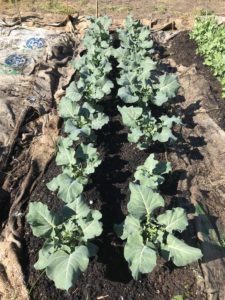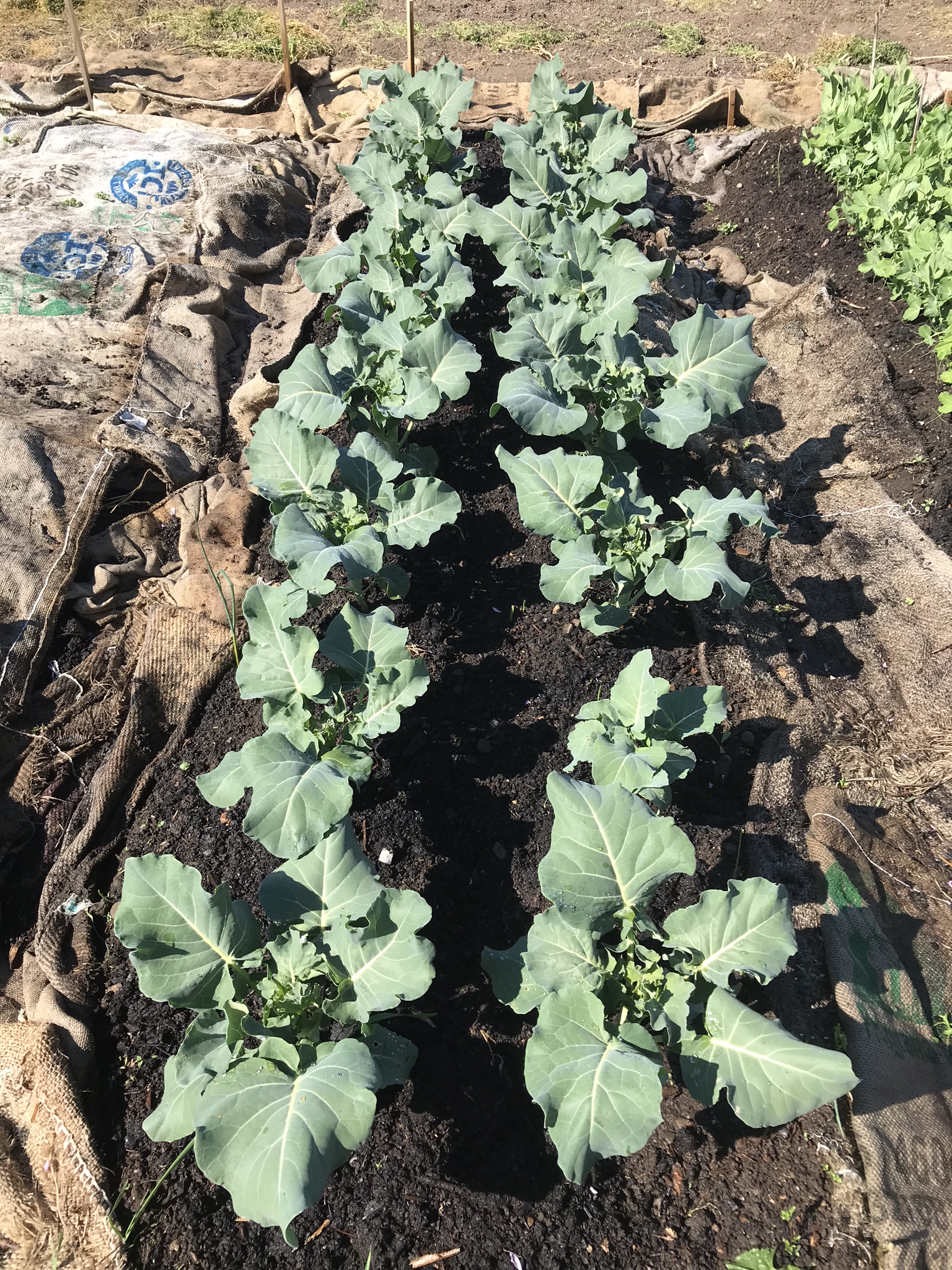Building Garden Beds in the Backyard
The drive to create a sustainable urban homestead is often centered on the desire to build a beautiful place with garden beds. Consequently, the vegetable garden is often the first step towards self-reliance that individuals focus on. Before you dive in and start digging it is wise to take a few minutes to think about the space you will be gardening. While the drive to just get started is always strong at the start a well-thought-out plan will let you achieve your goals over the long term.
There are so many popular methods for creating your initial garden beds let alone ways of growing food. The following guide highlights the most popular garden designs for backyard garden beds.
-
In-ground Garden Beds
An in-ground garden bed is the most simple form of building gardens.
First, use tools to clear the weeds from the land. Remove the grass, weeds, debris, etc. Second, mark your rows and paths for the garden space. Third, amend the soil and loosen the ground in preparation for planting. Fourth, transplant and begin watering and maintaining the garden space.
There are several ways to make in-ground beds very productive with additional work. However, that is not required to get started quickly on a low budget. When planning a large plot building beds directly in the native soil is the best option. Especially if your native soil is decent without serious contamination.

-
Wood Raised Garden Beds
Wood raised garden beds are a very popular garden bed style. As a result, many people think they are required to grow a successful backyard garden. This is not the case. While popular in pictures on Instagram or in magazines due to looking great does not mean they are essential to growing food. However, they do serve several purposes. For the right context, wooden raised beds can make a lot of sense in your urban homestead.
On the positive side, they help keep the garden clean and tidy. Additionally, a raised bed will be filled with new soil and compost thus making the ground very fertile for growing vegetables. On the negative side, a wood-raised bed is a real investment in money to buy the wood and fill it with soil, compost, and soil amendments. The most popular wood for a raised bed is cedar, other wood will work, but may not last as long. Wood-raised beds look great in your landscape. Not only will the garden design look polished, but it will also be super productive kicking out an abundance from the fertile soil.
-
Fallen Wood Borders
Build a rustic-looking raised bed from the trunk or limbs of a fallen tree. Although this serves the same function as a wood-raised bed and requires filling it up with soil and compost. Comparatively, it is a cheaper option. Due to the natural appearance of the bark creating the borders. Fallen wood beds fit well into a food forest garden design. To put it another way, these kinds of garden beds look natural and allow you to use a free resource. The tree trunks and branches will eventually break down, absorb water and help feed the bed in a similar fashion to a hugelkultur bed, but just on the edges.
-
Urbanite Garden Beds
In a similar fashion to fallen wood borders creating a raised vegetable bed out of urbanite is a perfect way to use an available resource. Urbanite is the chunks of concrete that result from removing a paved area. Maybe you broke up a concrete path, sidewalk, or driveway? Instead of paying to haul the concrete chunks to the dump, build a garden bed with it. Stack the chunks in the shape that you want and fill the space with topsoil and compost and get planting.
-
Hugelkultur Beds
Hugelkultur is a german developed concept of burying wood and plant debris with soil to create a very rich garden bed. In fact, they are excellent at absorbing large amounts of water in the decaying wood and slowly releasing it to the plants during the growing season. Using hugelkultur raised bed layers to create a rich soil over time is a great strategy.
The traditional hugel garden bed is very tall. First, large tree trunks or big pieces of wood are stacked in the shape of the bed. Second, smaller limbs and branches are stacked onto the big chunks. Third, green vegetation and other materials such as chicken manure, horse, manure, etc. are added. Some people will add straw from a chicken or duck coop at this layer as well. Lastly, the hugelkultur is topped with native soil and sod if it was cut out before placing the logs. Finished with compost and then planted. This will result in a garden bed that is 4 to 6 feet high and be a large mound in the garden space. Consequently, after a little while, a hugelkultur is incredibly productive.
A hugel garden is a lot of upfront work and development and generally takes a couple of years to mature into very productive garden beds, but in the right context, they can work very well. A simpler approach to a hugelkultur bed is to remove the top foot of soil and set it aside. Then fill the pit with wood limbs, branches, green materials, and compost and then replace the native soil. This results in a garden bed that is raised 18 inches to 2 feet above the ground and will settle to ground level over the course of a couple of years.
-
Lasagne / Sheet Mulching Beds
Building lasagne beds or sheet mulch garden beds is essentially composting in place. Then planting a garden in the rich soil that is created. A sheet mulch bed is best done ahead of the planting season, of course, you can plant directly into it after building. However, it is best to create the lasagne bed in the fall. In this case, the materials will have time to break down and be ready for planting. To create a sheet mulch garden bed you will need to gather several supplies. This includes collecting cardboard, newspaper, straw, manure, green materials or kitchen scraps, finished compost, and topsoil.
If you are planning to create an in-ground garden bed and do not have a sod cutter. Do not worry building a sheet mulch bed can be done directly on the grass. Due to the several layers that build up as the bed is created the grass is very unlikely to grow through the materials.
-
Ruth Stout Method
Ruth Stout who is the namesake for the Ruth Stout garden method was driven by keeping it simple in the garden. She created in-ground garden beds and followed a simple annual method of applying straw, leaves, and debris to compost directly in the garden beds. This material was then planted directly into each season. Her method for growing potatoes is an excellent way for urban homesteaders to prepare new ground for future gardens. Simply get the soil to bare ground. Then lay the potatoes on the ground. This followed by applying a thick layer of straw mulch over the potatoes. Add a little compost before applying the straw for the best results.
Ruth Stout knew the importance of heavily mulching in the crops and the benefits that mulch provides both the soil and the plants. Straw bales are relatively inexpensive and something that can be utilized for mulching large areas by urban homesteaders on a budget. Here is more about the Ruth Stout garden bed method.
-
Compost Pit Planting
Planting into a compost pit, whether you are using trench composting or digging as David the Good calls them melon pits is a great technique. For instance melons, winter squash, and pumpkins need a lot of nutrition in order to grow well. Therefore digging a pit and filling it up with kitchen scraps, manure, and compost provides the roots the ability to dig into the soil deeply and access the nutrients and minerals needed for superb growth. Digging a compost trench or pit fits well into a food forest design. Specifically, any patch of ground that gets great sun around your backyard orchard can be dug, filled with goodies, and planted with a melon or pumpkin and thrive.
Have fun designing the garden whether building in-ground garden beds or raised vegetable beds from wood, urbanite, or slate stone. Time spent in the garden is time spent well. Investing large amounts of resources and time to build beautiful gardens is ok. However, do not allow a lack of resources to keep you from building a space that is abundant and productive.
Backyard Garden Beds
No matter what garden beds you choose to build for your homestead have fun with the process. As a result, you may have a collection of different garden beds. Mixing the styles is perfectly ok. Our gardens have a mix of in ground garden beds, hugelkultur beds, and raised beds with wooden borders. Each serving different functions in our urban homestead.
Happy Garden Building!




Recent Comments